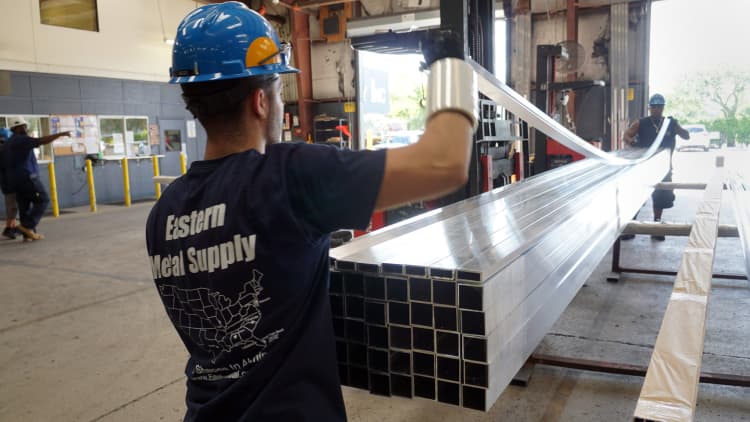
U.S. manufacturing output increased more than expected in August, boosted by a surge in machinery and primary metals production, but the outlook for factories remains weak against the backdrop of trade tensions and slowing global economies.
The Federal Reserve said on Tuesday manufacturing production rose 0.6% last month after an unrevised 0.4% drop in July.
Economists polled by Reuters had forecast manufacturing output rising 0.2% in August. Production at factories fell 0.4% in August on a year-on-year basis.
Manufacturing, which accounts for about 11% of the U.S. economy, is being hobbled by a year-old trade war between the United States and China and slowing global economic growth. The trade war has eroded business confidence, leading to a slump in the sector, which ironically the Trump administration has sought to protect against what it called unfair foreign competition.
A survey early this month showed a measure of national manufacturing activity contracted in August for the first time since August 2016. Manufacturing has also been hurt by an inventory overhang, especially in the automotive industry.
Fears that the effects of the trade impasse could spill over to the broader economy are expected to compel the Fed to cut interest rates again on Wednesday to keep the longest expansion in history, now in its 11th year, on track.
Officials from the U.S. central bank were due to gather for a two-day meeting on Tuesday. The Fed lowered borrowing costs in July for the first time since 2008.
Motor vehicles and parts production fell 1.0% last month after increasing 0.5% in July. Excluding motor vehicles and parts, manufacturing output increased 0.6% in August after declining 0.5% in the prior month. Machinery output rebounded 1.6% after dropping 1.7% in July.
The jump in manufacturing output in August together with a 1.4% rebound in mining, lead to a 0.6% increase in industrial production last month. That was the largest gain in industrial output since August 2018 and followed a 0.1% dip July. Industrial production rose 0.4% on year-on-year basis in August.
Oil and gas well drilling fell 2.5% last month, declining for a second straight month. Utilities output increased 0.6% last month.
Capacity utilization for the manufacturing sector, a measure of how fully firms are using their resources, increased to 75.7% in August from 75.4% in July. Overall capacity use for the industrial sector rose to 77.9% from 77.5% in July.
It is 1.9 percentage points below its 1972-2018 average. Officials at the Fed tend to look at capacity use measures for signals of how much "slack" remains in the economy how far growth has room to run before it becomes inflationary.

